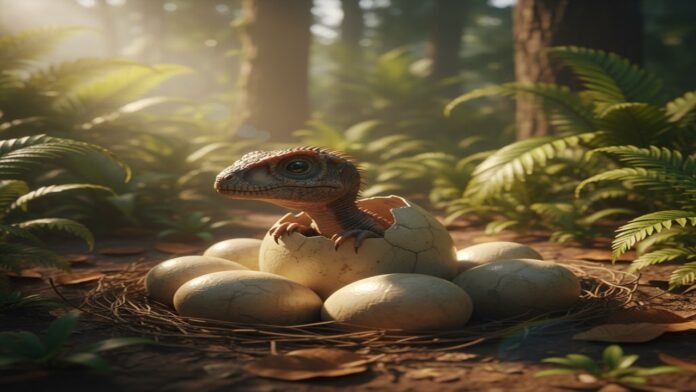It was a discovery that 70 million year old dinosaur nest has found and elicited waves of utter surprise in the paleontological world. In an exceptional discovery that they termed as spectacular, scientists have discovered a nest of unbelievably well-preserved dinosaur eggs in South America which is so uncommon that they would have to change the chapters on the evolution of birds. This fossil is about the size of an ostrich embryo and was in such good condition that the leader and world expert anatomist federico Agnolin was photographed to hold it, it literally appeared hard-boiled.
Gonzalo Leonel Muñoz, a vertebrate paleontologist at the Bernardo Rivadavia Argentine Museum of Natural Sciences, told National Geographic, “It was completely unexpected.” This is the place where dinosaur fossils are a fairly frequent find, but he observed that eggs, and one of such fine quality, can hardly be found at all. The discovery of this 70 million year old dinosaur nest is truly unique.
A 70-Million-Year-Old Dinosaur Nest Secret
Those who were excited by the work of the team, which was clearly demonstrated in the supporting footage and photos published on the Instagram page of the Laboratory of Comparative Anatomy and Vertebrate Evolution, were not simply celebrating an egg. According to the caption to one of the clips, this was quite possibly the FIRST discovery of this sort in South America that the fossil was over 70,000,000 years old, and that it was not isolated, we had found a nest. The confirmation of a complete 70 million year old dinosaur nest is crucial.
The most likely candidate to this outstanding discovery is Bonapartmentykus, a small and carnivorous theropod that lived in the region in the Late Cretaceous era. The parent dinosaur is more likely to have been what makes the discovery more persuasive.
Muñoz said that it is very unusual to find the egg of a potential meat-eater due to an amazing evolutionary phenomenon. Scientists have become inured to digging out eggs of the long-necked sauropod dinosaurs that are spherical, thick-shelled, and look like giant balls. But the eggs of theropods—the forebears of the birds of our day are not alike. This is why finding the 70 million year old dinosaur nest is so significant.
According to the paleontologist, their eggs are more bird-like because the carnivorous dinosaur line would spawn the birds. This means that they will be more fragile eggs, with a finer shell and therefore more difficult to survive with. This scarcity is added to by the fact that there were just a lot less carnivorous dinosaurs than the herbivores. It is no miracle that these eggs survived 70 million years with their extreme frailty. This particular 70 million year old dinosaur nest defied the odds.
The Next Step: Looking Inside the Rare Fossil
The egg, and the rest of the specimens of the repository, is to be sent to the Argentine Museum of Natural Sciences, where they will undergo a thorough investigation. The greatest point of interrogation still remains, does the fossilized shell contain an embryo? The examination of the 70 million year old dinosaur nest is paramount.
The team will now be forced to use the sophisticated methods of imaging, such as deep scans in order to determine whether the fragile shell holds the clue to unlocking the identity and secrets of the dinosaur. Muñoz is hopeful of what they can discover in there. The results from the 70 million year old dinosaur nest will be shared soon.
As he affirmed, should there be something contained in the egg, this would identify the species of dinosaur and possibly provide insight into the evolution of dinosaurs. In particular, in case the dinosaur was carnivorous, the embryo might provide crucial data on how the dinosaur embryos transformed into the bird embryos. It would show information regarding their chicks, their condition at birth and whether they were fully developed before hatching. The 70 million year old dinosaur nest is a treasure trove of data.
Muñoz concluded that regardless of whether the egg is filled with an embryo, or simply a very well-preserved shell, whatever information it is able to give will be new and incredibly interesting, as it can enrich our knowledge on an important point of transition in the history of life. The discovery is the best moment in time of the perfect preservation of the moment and the first opportunity to see a 70 million year old dinosaur nest family portrait. The incredible state of the 70 million year old dinosaur nest will yield new discoveries.



